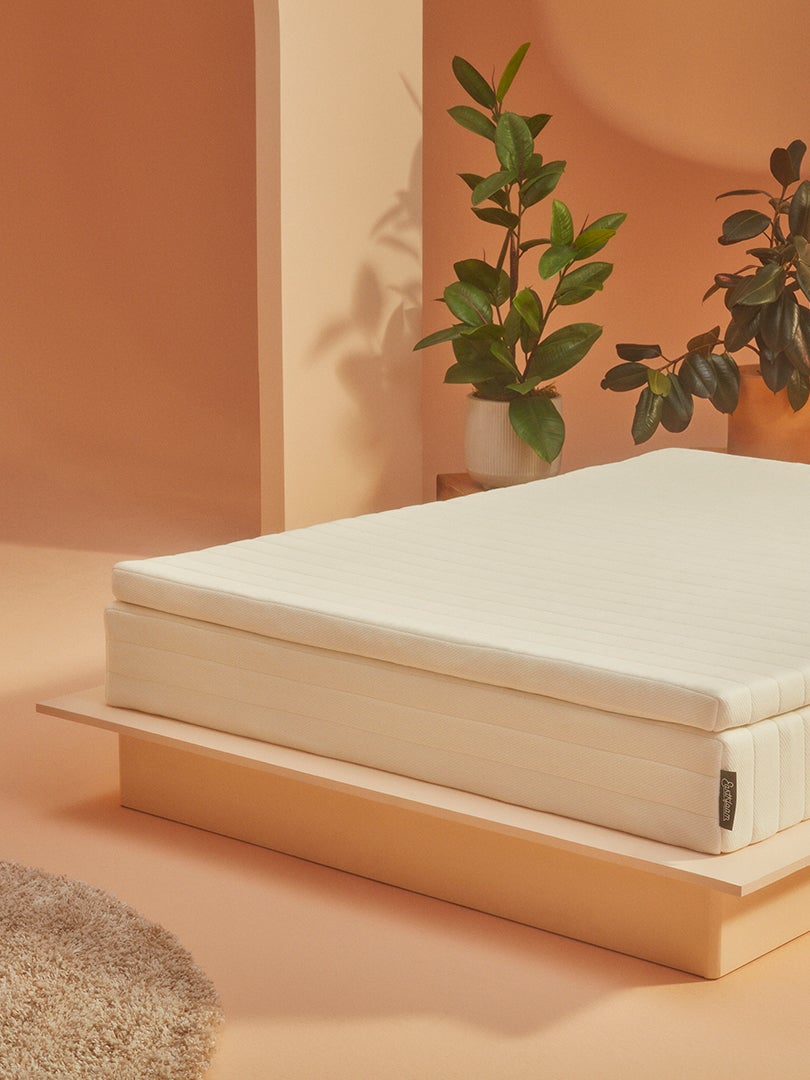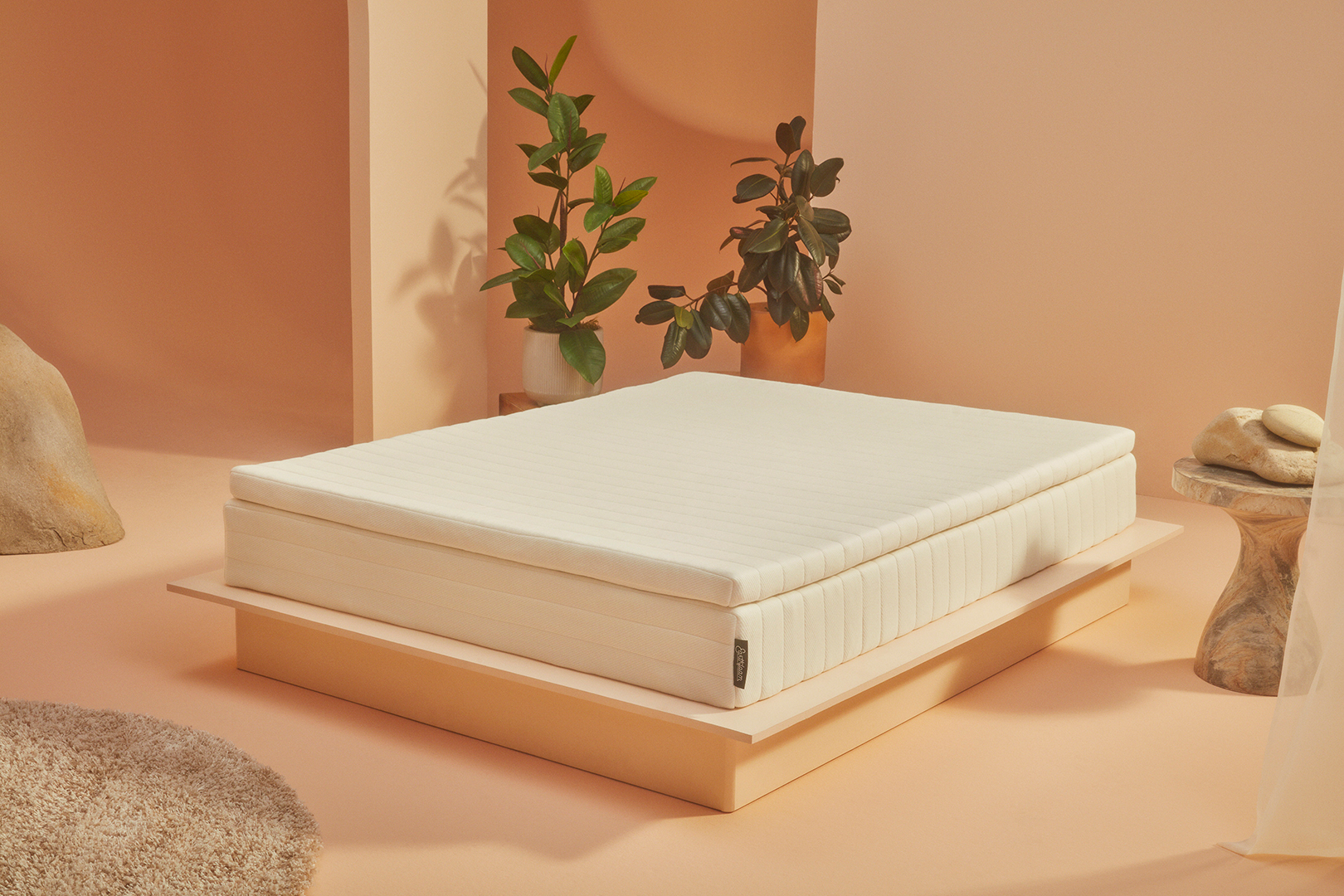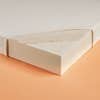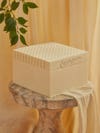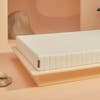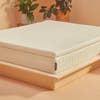I Swapped My Memory Foam Mattress for One Made of Rubber—Here’s My Verdict
A deep dive into Earthfoam’s eco-launch.
Published Jan 25, 2023 1:00 AM
We may earn revenue from the products available on this page and participate in affiliate programs.
I’ll tell you what: Being 6 feet tall is all rainbows and butterflies until you have to share a queen-size bed with your equally long-limbed partner (he’s 6 feet 3) every night. The oceanlike span of a hotel room’s king mattress has long been our pipe dream; we’d never been able to squeeze one into our New York City apartment.
But when we made the leap from Manhattan to the suburbs last month, visions of sleeping spread eagle danced in my head. This was our chance to upgrade. Then our deputy editor pointed me to Earthfoam, a new brand of “natural rubber” mattresses that launched in November 2022. I jumped at the chance to test one out.
I had my choice of two firmness levels—medium (“Super supportive for your spine, with a bit more cushion for shoulders and hips,” according to the brand) and firm (“Just plush enough to cushion pressure points”). Given I was coming from nights on a supercushy memory foam mattress, I went with the former in—duh—the $1,499 king size. Here’s my verdict.
The Earthfoam Mattress
It goes without saying that the DTC mattress market is a crowded one. Earthfoam’s claim to fame is its unique makeup: two layers of natural, organic rubber foam—“the most natural, breathable, durable, and sustainable material available for mattresses”—processed in the brand’s own Sri Lankan factory. No polyurethane, no springs. Organic wool batting and an organic cotton backing and cover are the only other components, which are sewn in Chicago.
Natural rubber sounds like an oxymoron, but it’s legit. More specifically, it’s the sap of rubber trees. To transform it from liquid to foam, Earthfoam mixes in sulfur, zinc oxide, accelerators, and antioxidants at a high temperature, pours it into molds, and bakes it for an hour at a precise 212 degrees. Because trees are a renewable resource, this technically makes natural rubber sustainable. However, high demand contributes to monoculture farming, pollution from pesticides, and deforestation, according to WNET’s The Sweaty Penguin podcast. All of that is to say: As with most eco-friendly things, it’s complicated.
Is Earthfoam the only mattress brand to use natural rubber with a Global Organic Latex Standard certification? No, but its competitors often pair it with a layer of coils or sell their mattresses at a much higher price point. The most comparable offering I found is Avocado’s Latex Mattress—it has the same 100% natural rubber core, produced in its own factory—and it starts at $2,399…for a twin. For comparison, the same size Earthfoam mattress is a mere $699.
The Delivery and Setup
Shipping is free and FedEx dropped off our mattress in a columnlike cardboard box right on time, but they brought it no further than my front door; that’s because Earthfoam doesn’t currently offer white-glove delivery. If you order a king, as I did, this will mean putting your entire body weight (and likely that of your partner or a friend, too) into getting it up the stairs and onto your bed frame. The medium Earthfoam mattress is handle-less and a hefty 158 pounds, plus 12 more if you include packaging. (For comparison, Casper’s standard king-size foam mattress weighs only 105 pounds.)
PSA: After the fact, Earthfoam told me anyone can reach out to the company directly to arrange for FedEx to unbox your mattress and take away the packaging at an extra cost of $250 for a twin or queen or $50 for a king and California king. (The bigger mattresses already ship via Fedex Freight, so you’ll pay a little less.) Trust me, it’s worth it.
Once it’s out of the box and unfurled onto your bed frame, though, you’re golden. There’s no wait time for the mattress to expand or air out, plus Earthfoam claims you’ll never need to flip or turn it for even wear.
The Style
You can’t go wrong with channel tufting, something Earthfoam clearly took into consideration when developing the knit exterior of its mattresses. The creamy organic cotton cover is refreshingly simple—if sheets weren’t a thing, you wouldn’t need to put any on.
One thing to note: At 8.5 inches tall, the mattress is on the shorter side (others we looked at were in the 11- to 11.5-inch range). If you’re tall like me or not into low-slung furniture, you might want to pair it with a box spring.
The Sleep
You don’t sink into the Earthfoam like you would with a typical foam mattress. Rather than mold to your body’s position, it’s bouncy like, well, a rubber ball. A soft mattress this is not, but I wouldn’t call it uncomfortable, just ultra-supportive—which the brand claims our bodies prefer. There currently isn’t much science to back that up, but a 2003 study did report that after 90 days, people who slept on a medium-firm mattress had less back pain than those who slept on a firm mattress.
As we once dreamed of, my husband and I can now stretch out and barely graze each other. We fit vertically, too; no toes hanging off the end. An unexpected benefit: Unlike when we slept on our old mattress, I don’t wake when he flops over, which I credit to the mattress’s firmness.
The Final Word
It took me a few days to adjust to a firmer mattress, but a month later, I really don’t notice a difference. I happily climb into bed at an absurdly early hour and sleep like a baby till morning. (I’m also a big proponent of a mattress topper if you’re craving a little more cushion.) While the setup wasn’t a walk in the park, it’s a distant memory now. And it’s one I hopefully won’t be revisiting any time soon—Earthfoam claims this mattress will last three times longer than my old one.
